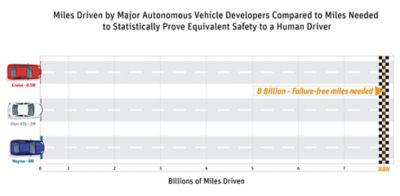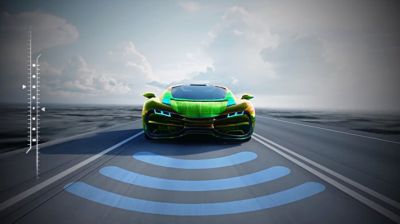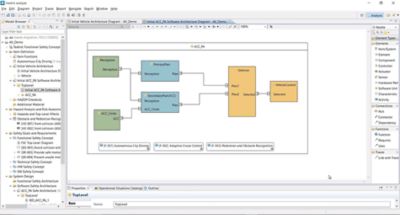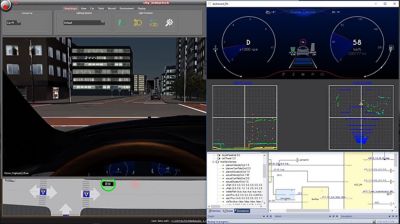-
-
Software gratuito per studenti
Ansys potenzia la nuova generazione di ingegneri
Gli studenti hanno accesso gratuito a software di simulazione di livello mondiale.
-
Connettiti subito con Ansys!
Progetta il tuo futuro
Connettiti a Ansys per scoprire come la simulazione può potenziare la tua prossima innovazione.
Paesi e regioni
Customer Center
Supporto
Partner Community
Contatta l'ufficio vendite
Per Stati Uniti e Canada
Accedi
Prove Gratuite
Prodotti & Servizi
Scopri
Chi Siamo
Back
Prodotti & Servizi
Back
Scopri
Ansys potenzia la nuova generazione di ingegneri
Gli studenti hanno accesso gratuito a software di simulazione di livello mondiale.
Back
Chi Siamo
Progetta il tuo futuro
Connettiti a Ansys per scoprire come la simulazione può potenziare la tua prossima innovazione.
Customer Center
Supporto
Partner Community
Contatta l'ufficio vendite
Per Stati Uniti e Canada
Accedi
Prove Gratuite
ANSYS BLOG
August 29, 2018
Simulation is the Fastest Way to Get Autonomous Cars on the Market
Autonomous cars will only be safe when they are better able than humans to adapt to anything the open road can throw at them.
Proving that cars are better than humans at driving will take upwards of 8 billion miles of test driving. Waymo, the current leader in miles driven, is at 8 million miles.
Autonomous car developers have a long way to go to statistically prove their cars are safer than humans.
Clearly, the only way to test that many miles — while releasing autonomous cars to the public any time soon — is with simulation.
“Simulation’s function is to train and test the artificial intelligence (AI),” says Sandeep Sovani, automotive global director at Ansys. “Autonomous vehicle manufacturers can only be assured a car will be able to face road conditions if the software is validated in these conditions.”
Why Autonomous Cars Need Simulation to Make It on the Road
The trouble with relying solely on AI for autonomous cars is that you can’t allocate or trace the neural networks of AI to safety requirements.
This doesn’t sit well with the automotive safety integrity level D (ASIL D), the highest autonomous safety standard.
ANSYS offers a simulation suite to design and validate autonomous cars.
“As a result, autonomous car developers need to design safety gate architecture. The safety gates decide if the outputs of the AI system violate any safety rules. If the safety rules are in violation, then the architecture initiates a course of action based on a safety plan,” says Sovani. “This system needs to be validated. And the only way to validate it in a reasonable time is with simulation.”
Ansys offers a suite of simulation tools that offer a wholistic approach to the design and validation of autonomous cars.
How Ansys Software Creates and Validates Autonomous Car Logic
Medini Analyze software creates the safety gate architecture that identifies the potential hazards and risks to the autonomous car. medini is also used to determine the functional safety requirements and which responses are triggered. These responses control how various system components react to the hazard. The response software governing these components is made using SCADE Suite.
Safety gate architecture created in medini analyze
For instance, say the safety gate architecture detects an object in the path of the car — something’s out there and there is a risk of collision. The safety gate architecture then decides what to do to avoid that object based on a series of safety plans — for example, activate braking safety plan 100. This decision then triggers the software created within SCADE which controls how the system components respond to the safety plan — the brakes engage at 100 percent until the object is no longer in the path.
This system can then be validated within a virtual world using Ansys VRX. VRX populates a digital street with various obstacles, weather and road conditions. Users can test a digital car governed by the real driving software within this virtual world.
But how does this virtual car respond to this digital world? Ansys Speos can simulate this behavior. This software mimics how optical sensors would respond to objects within the digital world. This tool is used to validate the hardware that triggers the safety gate architecture.
Testing out the safety gate architecture within a digital landscape is much safer and faster than doing this in the real world.
“Ansys is building a comprehensive simulation platform for autonomous vehicle development at various levels — from component, to software to system,” says Sovani. “Optics tools are valuable to develop the hardware sensors. Closed loop simulations allow you to drive and validate vehicles governed by the same software used in the real world. This helps you to quickly optimize and develop the software in a safe environment. You don’t care if a virtual car hits a virtual pedestrian in a virtual world, but we do care if you hit a real person.”
Learn More
To learn about more autonomous tools offered by Ansys, click here. Or watch this video:



